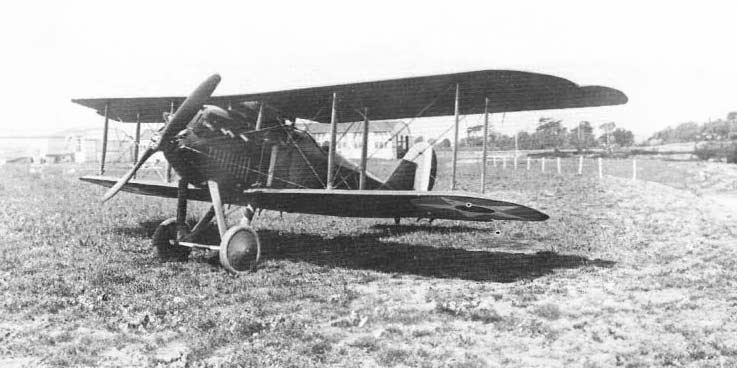The Orenco D: Early American fighter, biplane design, first foray into indigenous fighter aircraft production, powered by a Hispano-Suiza engine. The Orenco D represents an early effort in American aviation to establish a home-grown fighter aircraft during the post-World War I era. Designed and built by the Ordnance Engineering Corporation (Orenco), it was an attempt to reduce reliance on European aircraft designs and build a domestic aviation industry.
In the aftermath of World War I, the United States found itself dependent on European designs for military aircraft. To foster independence and domestic capability, the Orenco D was developed as an answer to the call for an American-designed and built fighter aircraft.
History of the Development of the Orenco D
In the 1910s, the burgeoning aviation industry in the United States began to realize the importance of establishing its own design and manufacturing capabilities. At the time, European aircraft, particularly those from France and the United Kingdom, dominated the skies, and the American Expeditionary Forces relied heavily on these imports during World War I.
Following the war, the Ordnance Engineering Corporation (Orenco), a company established in New York, endeavored to develop an indigenous fighter that could rival the performance of its European counterparts. The primary driver for this initiative was the desire for the U.S. to have its own robust and self-sufficient aviation industry.
The development of the Orenco D was launched in the early post-war period, with the prototype’s first flight occurring in 1919.
Design of the Orenco D
The Orenco D was a single-seat biplane with a traditional wood and fabric construction. It had a length of 21 feet 2 inches (6.45 meters) and a wingspan of 28 feet (8.53 meters). The aircraft’s design was relatively standard for its time, with two main wings stacked one above the other and a fixed tail-dragger landing gear.
It featured a 300 hp (224 kW) Hispano-Suiza 8Fb V8 engine, which was among the most advanced and reliable engines available, providing the aircraft with respectable performance.
The advantage of the Orenco D was that it was designed to be robust and easy to repair, with wide-track landing gear that improved ground handling. However, it was also somewhat conventional and lacked the innovative features found in some contemporary European designs, which limited its performance and appeal.

Performance of the Orenco D
The Orenco D’s Hispano-Suiza engine propelled it to a maximum speed of 122 mph (196 km/h), with an operational range of 290 miles (467 km) and a service ceiling of 18,000 feet (5,486 meters). Compared to other fighters of its time, such as the French SPAD XIII and the British S.E.5, the Orenco D was competitive in terms of speed and maneuverability, but it did not offer a significant advantage over these established designs.
Military Use and Combat of the Orenco D
The Orenco D was armed with two synchronized .30 caliber machine guns, a standard armament for fighters of the era. Although it was designed for combat, the Orenco D never saw action. The aircraft was evaluated by the U.S. Army Air Service, but it was ultimately rejected in favor of the Thomas-Morse MB-3, which was seen as having better performance.
No significant sales were made to foreign countries, and the Orenco D’s military career was brief. It was used for a short time for training and evaluation purposes before being overshadowed by newer designs. The U.S. Army Air Service decided not to adopt the Orenco D as its primary fighter, and it was soon replaced by more advanced aircraft like the Boeing P-12.
The Orenco D was a reflection of the United States’ nascent steps towards an independent aviation industry in the post-World War I era. While it did not achieve widespread use or combat glory, it represented an important phase in the evolution of American military aviation. Its development highlighted the challenges and opportunities of the time and paved the way for future advancements in the design and production of fighter aircraft in the United States.
Back to the Warbirds section.